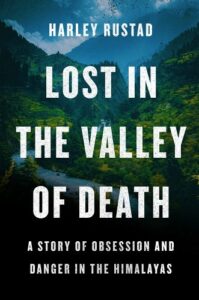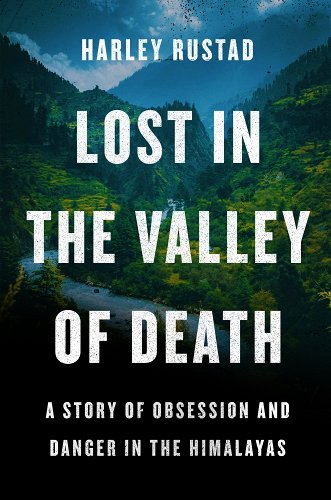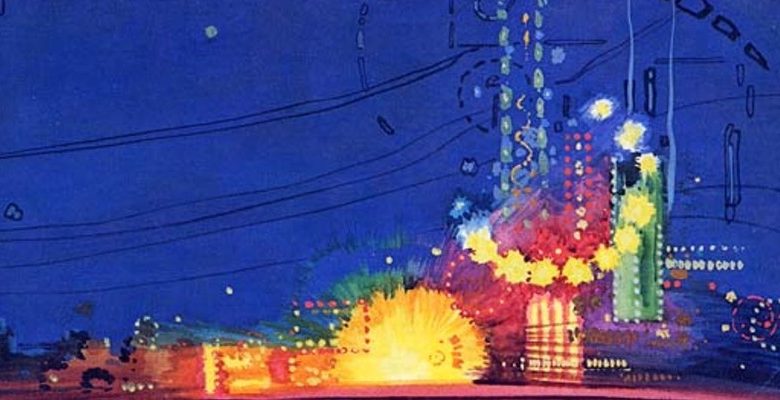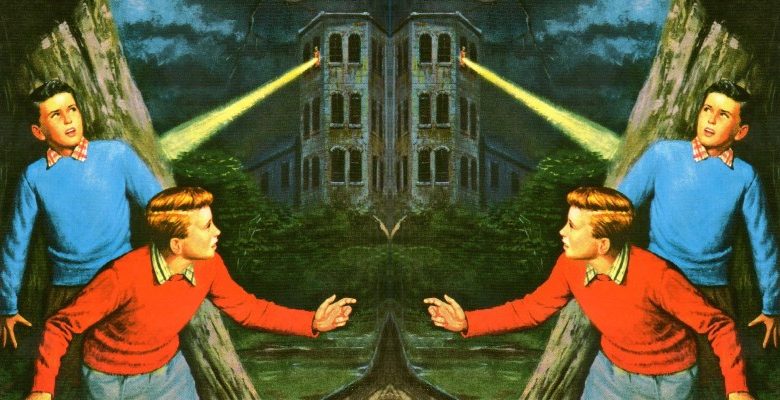[ad_1]
It’s not the deaths that make the Parvati Valley unusual, it’s the disappearances into forest or mountain or valley with little trace. And there are more accounts than those noted in police registries and written into headlines that make the news, shared as stories and desperate pleas from family members posted on online message boards and travel forums with scattered details. Communication with loved ones and friends ends abruptly, with a final letter, phone call, or email before blinking out, leaving faint trails for heartsick families to follow.

Some blame the mountains. As in any range, there are gorges and cliffs that can trouble inexperienced, and even some seasoned, hikers who push themselves too high and too far beyond their capabilities and lose themselves to a wild animal, down an errant turn on the trail, or to starvation. Yet nearly all paths, within a day or two’s walk, lead to a village. Unless a trekker ventures into one of the tributary glens that fork off the main valley, it is hard to lose sight of the Parvati River. It is an orienting landmark, yet its banks are treacherous and its waters swift. Many tourists, both international and domestic, have died after stepping too close to it and losing their footing.
Some people believe that the disappearances are the result of the valley’s isolation. Far from help, tourists are prime targets of opportunistic robbery and murder. In 2000, two hikers from Germany were shot while camping, and one lost his life. In another attack that year, a couple and the woman’s fourteen-year-old son were attacked while camping between Kheerganga and Mantalai Lake. Their bodies were thrown into a gorge. The woman, María Ángeles Girones from Spain, and the boy died, but the man, Martin Young from the United Kingdom, miraculously survived. “I think it was completely random,” Young told the BBC while recovering in a hospital in Delhi. “I don’t think they picked on us in particular. But it was premeditated, certainly premeditated because the attack and our pleas for mercy as they were beating us just increased the assault. And the motive was simple robbery.” In 2007, an Israeli backpacker, Dror Sheck, was hiking with a group of friends around Kheerganga when they noticed he had lagged behind the group and was out of sight. When they went looking for him, they “found him bleeding, lying on a small path. Next to him was a knife stained with blood and the leaves next to him had blood on them too,” one of the friends told the Jerusalem Post shortly after Sheck’s death. He died before help could arrive. “Tourists from all over the world come to this magical place that’s also known for its dangerous history,” David Danieli, Israel’s ambassador to India, told the Post at the time. “Gangs of criminals and drug dealers wander around in this isolated area and can commit a crime and disappear.” In 2012, a fifty-two-year-old Italian tourist named Alessandro Tesi was found dead in the hall of his guesthouse in Kasol.
The majority of disappearances have involved men in their twenties and early thirties who fit a profile of adventurous travelers seeking to push themselves physically or spiritually. This profile has led to a theory that a single serial killer has been lurking in the forested hills for decades, preying on a particular kind of traveler carrying valuables such as cameras and passports, drugs, and cash. Some speculate that the killer is a Hindu holy man, while others believe it is a foreigner who blends in with tourists to hide in plain sight. According to one foreign national who has been living near the Parvati Valley for decades, in the late 1980s and early 1990s, an Indian man was charged with and jailed for the murder of a foreign tourist; it was rumored that he had killed a total of thirteen foreign travelers in the region before his arrest. “If you slip anywhere along that river, then no one will ever find a body. You’ll be pulverized into microscopic pieces. Who would know what had happened?” the foreign national points out.
The theory harkened back to the 1970s, when the Hippie Trail was haunted by a string of mysterious murders of international travelers in Thailand, Nepal, and India. Some were eventually linked to Charles Sobhraj, a French national born in Saigon to a Vietnamese mother and Indian father, who was open about his disgust of the beatniks and hippies who were arriving from around the world en masse throughout South and Southeast Asia. Sobhraj followed a set pattern: befriending tourists, robbing them of passports and money, often traveling under their identities, and, in some cases, murdering them. He was eventually arrested in 1976 after drugging a tour group of French university students in New Delhi. Sobhraj became known in the media as “The Bikini Killer,” for some of his more high-profile victims in Thailand, and “The Serpent,” for his ability to evade authorities and his escape, in 1986, from Tihar Prison, India’s most notorious penitentiary. He was arrested again in Kathmandu in 2003 and imprisoned on a life sentence for the 1975 murder of two tourists in Nepal.
Police are understandably hesitant to entertain the theory that a serial killer has been preying on foreign tourists in the Parvati Valley. They are adamant that some of the disappearances are undoubtedly, if tragically, linked to the valley’s drug trade. Nishchint Singh Negi, who served as additional superintendent of police for the district that includes the Parvati Valley from 2015 to 2018, saw the case files of several missing international tourists fall onto his wide wooden desk at the main police station in the city of Kullu. Inside his green-walled office, he listened to pleas for assistance from worried families and concerned friends searching for lost loved ones. In his mind, the valley’s hash is a powerful lure. “Most of the tourists that come here are coming for the hash—the quality is one of the best in the world,” he says, rubbing his forefinger and thumb together as if rolling a marble. “The Malana hash—it’s sticky.” Regional and national police forces are fully aware of the hidden plantations throughout the Parvati Valley, but they have done little to curb the steady black ooze from the valley. Every year, small cohorts of officers occasionally descend on villages in the early fall with machetes and electric weed whackers to cut down plants. But these actions are mainly for show. They may destroy thousands of hectares of cannabis plants in the valley, but the larger plantations, where the majority of the valley’s cannabis is grown, are tucked up mountains on high-altitude meadows accessible by steep trails, with names such as Magic Valley or Valley of Devils.
The police do what they can, but either they fear the power of the organized drug traders or they are reluctant to shut down one of the region’s primary tourism draws. Negi has seen many foreigners engage in both cultivation and trafficking. A couple months’ work can produce hash worth thousands of dollars, after all. Or, when purchased in bulk at its source in the valley, it can be sold at marked-up prices elsewhere in the country—and fund a traveler for months.
The families of some of the valley’s missing believe that their loved ones succumbed not to the drug trade but to the drugs themselves. Hash isn’t the only drug of concern; there is another, much more powerful one found in the region, from a plant with trumpet shaped, purple-white flowers that can be toxic in large quantities and hallucinogenic in small doses. Known as devil’s snare, thorn apple, or nightshade, it can be found around the world, but its most common name, datura, traces its origins to India. There it is a holy plant, a flower that in one of Shiva’s depictions appears tucked into his matted locks. Once used in Ayurvedic medicine as a treatment for various common ailments including headaches, inflammation, ulcers, and asthma, its potency is so difficult to control that its distribution has been banned.
Datura seeds, which hold the plant’s most toxic element, are sometimes mixed with marijuana or hash and smoked in a chillum as a powerful hallucinogen. But the side effects can include delirium, confusion, and psychosis that can last for several weeks—reactions known to be so severe that the plant has been used to poison people, mixed into their food in order to rob them. A 2015 report in the Indian Journal of Forensic and Community Medicine noted, “Suicide and homicidal cases have been reported. Most commonly used as stupefying agent and road side poison. Seeds are mixed with sweets and given to the unsuspecting victim. The drowsy or stupefied victim is robbed off [sic] his money or valuable articles.” The same article recounted that in 2014, a thirty-five-year-old tourist traveling on a train was offered prasad—a piece of food typically consumed during religious ceremonies—by a sadhu. Within an hour, he became giddy and delirious, then drowsy; next he began vomiting. While in a stupor, he was robbed by the man who had given him the food. It was later determined that the tourist had been fed datura.
Datura has even been found to produce amnesia. In the documentary Missing in Kullu, a man from South Africa named Sacha Beattie, who had intentionally taken datura while in India, described how he had “disappeared—from my own mind and from reality.” His daze lasted eighteen months. “I forgot about everything. I never thought about my parents, I never thought any myself, I never thought about God, I never thought about a cup of tea. I had no thoughts.” His family heard that he had been involved in a motorcycle accident. “I was a missing person,” Beattie said in the interview. “I was found the minute I walked into an embassy on my own will.”
Beyond drugs, another form of illegal activity has long flourished in the valley: providing cover for people wishing to disappear. Locals can rattle off names of foreigners who have lived illegally in the forests and hills for years, sometimes decades. They have come from the United Kingdom, Germany, Italy, Israel, France, and the United States and have found remote cottages, homestays, and even caves in which to make a new home. Some have engaged in the drug trade, while others sought a peaceful existence away from distraction or regulation, growing vegetables and living off the land in a beautiful and spiritual corner of remote India. Many point to Malana when asked where the valley’s intentionally disappeared might be found. “In the days of the Rajas,” the anthropologist Colin Rosser wrote in 1956 after spending two years studying the village, referring to India’s precolonial period, “Malana provided a sanctuary for absconding offenders and criminals bent on escaping from punishment by the Rajas’ courts. . . . This custom continued throughout the period of British rule and still continues.” Malana’s independence as well as its legendary inaccessibility have drawn curious outsiders to try to glimpse behind the veil.
There is one man, the valley’s most legendary long-term international resident, whose name is still uttered in hushed tones. It is often written as “Glenu.” He arrived in the late 1970s and was often credited with igniting the region’s commercial hash production by teaching locals how to make “cream,” a more refined version of charas. In the fall of 2009, two filmmakers from a cannabis travel show called Strain Hunters went to the Parvati Valley to film an episode about India’s world-renowned Himalayan hash plantations and to seek out “Glenu.” An Italian man named Franco Casalone, a cannabis activist and the author of several books on cultivation, led them through the valley. Casalone had visited India several times in the late 1980s and early ’90s, and then, in 1996, had come to the Malana region, where he lived in a shelter built into the lee of a giant boulder. He stayed for a decade—where he became, as he’s been called, “perhaps the greatest European expert in traditional charas production techniques.”
Casalone led the filmmakers to a wooden house tucked away up a mountainside across the glen from the village of Malana. There lived an old Italian man named Galeno Orazi, the renowned “Glenu.” Orazi had a long gray beard and wore the woolen vest and cap common to locals in Himachal Pradesh. “He decided to come here,” Casalone said in the documentary, “and to forget this fucking new world.” Orazi cooked over a firepit, grew his own food and cannabis, and remained largely disconnected from the outside world. In the early 1980s, he was reportedly arrested twice, for drug possession and for overstaying his visa—which only inflated his legend.
The attention, however, has had its downside. After one amateur documentary was posted to YouTube, showing close-up shots of production and kilograms of black hash, police arrived in full force, cutting down plants and making arrests. Orazi himself was apprehended by authorities in November 2010, a month after the episode of Strain Hunters aired. Local police conducted a raid in the Malana glen and arrested the Italian man, then sixty-five, for an expired travel visa. “He had been living in this village for two years. To our surprise, he could speak fluent Hindi as well as the local Malani dialect,” a police officer told the Indian Express. The newspaper called him a “self-styled baba.” In fact, Orazi had been living in the Parvati Valley on and off for more than twenty-five years.
The story of Orazi is not unique. Some foreigners have passed entire travel visas in the valley, returning year after year to spend six months at a time; others have ignored the exit date on their visa entirely and stayed for long beyond. Tales of these long-termers have quietly floated around the Parvati Valley’s deepest corners for decades. A report published in the Guardian in 2002 identified several foreigners who had been living in the valley for years. One man from the United Kingdom had been living near Malana for six years until he was arrested, upon which he claimed to be a reincarnation of Shiva and therefore, he maintained, required neither passport nor visa. There was also a former British Airways stewardess who, in 1998, requested a new passport after having lived near Malana for fifteen years; a German woman who had been in the valley since the early 1990s, who earned income by buying and selling hash; and a man who had given up his life in Italy to live in the Parvati Valley and who claimed to be named on a missing-tourists list that was maintained by local police. “Maybe it’s been ten years now, you lose track of time up here. Don’t even know if my passport’s valid,” Paolo, an Italian, told the Guardian. “The missing don’t go looking for the missing. We don’t want trouble with the police. There are lots of us here, and we keep ourselves to ourselves.” A source in the article mentioned that in the early years of the 2000s, thousands of foreign nationals had been living illegally in the mountains around the Parvati Valley.
The local authorities were well aware of the situation. “In the older cases, like Ian Mogford and Ardavan Taherzadeh, I don’t think I’ll ever be able to tell the parents what happened because of the lack of support from the foreigners living here and previous police failings,” Venu Gopal, superintendent of police for the Kullu district during the early 2000s, told the Guardian. “This solitary, secret life, of the deliberately missing, the selfish life of those who would rather protect themselves than help others, is going to come to an end. I am slowly pulling in everyone who has no visa or passport. I know for certain that a couple of the people on my missing list are living in the mountains. But soon it will no longer be possible to just vanish in Himachal Pradesh—whether deliberately or by accident.” Yet in the decade and a half after the district superintendent of police made that bold pledge, the trend continued, and every year the department makes arrests of foreigners living illegally in the valley. In 2010, a new district superintendent of police, K. K. Indoria, told the Indo-Asian News Service, “We have information that a large number of foreigners who disappeared mysteriously are illegally staying in various tribal areas.” In the early 2000s, an Austrian national reportedly reappeared in the Parvati Valley after having been missing for a dozen years. He allegedly stated that he had simply wanted to disappear and live on his own in the mountains.
The families of many of the valley’s missing and disappeared have clung to stories like these. Years after Ian Mogford’s 1996 disappearance, rumors persisted that the British backpacker was still alive and still in India. According to a now-defunct investigation company, posters with Mogford’s picture were pasted around the Parvati Valley, as well as in Delhi’s popular backpacker quarter, Paharganj. In Delhi, someone immediately removed the posters; when they were replaced, they were torn down once again. “Around Christmas 2001,” read an article in the Guardian, “the investigators say that one of their agents picked up Mogford’s trail, traced his movements for three or four days, and approached him. He ran.”
As Homa Boustani, the mother of Canadian tourist Ardavan Taherzadeh, continued to search for her son, year after year, she began to question if he had simply decided to step back—“To stay away, cut off for a year, two years,” as she said in the documentary Missing in Kullu. In a handwritten letter to a friend, Taherzadeh had written about how he had been questioning his life’s direction: “It doesn’t have to be that way. I think life is supposed to be much easier. Do I have a place to sleep? Do I have food? A place to sit?” He wrote “a shirt” before crossing it out, as if to suggest that clothing was too trivial to even mention. During her first trip to the valley, Boustani spoke with a group of sadhus, who suggested that Taherzadeh had disappeared intentionally.
Each addition to missing-persons lists has begged the question: Of all the travelers who disappeared without a trace, who were lost or murdered—and who simply did not want to be found?
___________________________________
Excerpted from Lost in the Valley of Death: A story of Obsession and Danger in the Himalayas, by Harley Rustad. Published by Harper. Copyright, 2022. All rights reserved. Reprinted with permission.

[ad_2]






